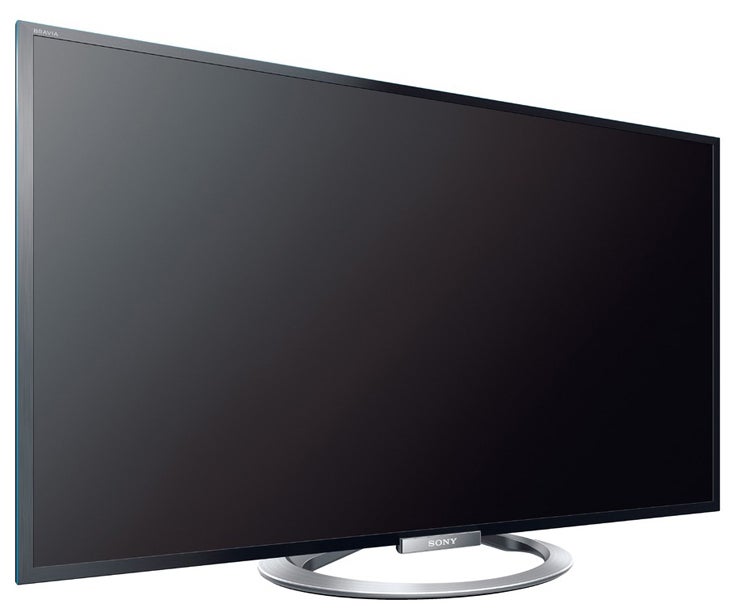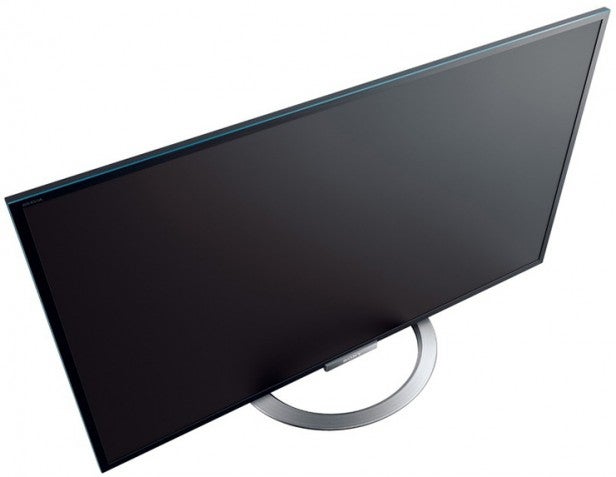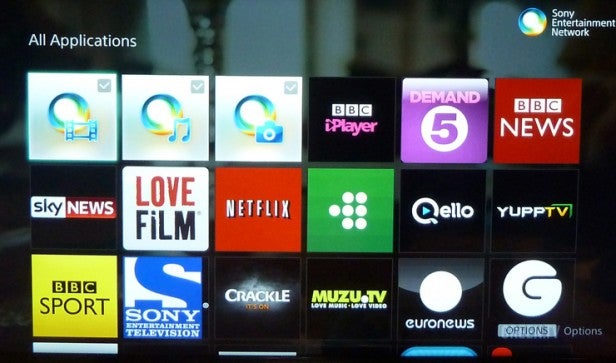Sony Bravia KDL-47W805A Review - Performance Review
Performance
Can Sony's second tier W8 series pick up where the deliriously good flagship W9 left off?

Sections
- Page 1 Sony Bravia KDL-47W805A Review
- Page 2 Performance Review
- Page 3 3D and Conclusions Review
Sony KDL-47W805A – Contrast
All that’s left for us to look at now is how well Sony’s picture quality
department has been able to work with its first passive 3D TV.
And the answer, sadly, is not well.
The main problem is black level response. While this year’s W9 (Sony KDL-55W905A) and last year’s HX8 series (Sony KDL-55HX853) both set new standards where black levels were concerned, the Sony KDL-47W805A’s handling of dark scenes is really pretty average. Watching any very dark scene on the set in a reasonably dark room makes it immediately obvious that the inky blackness we’d hoped for has been replaced by a milky greyness that stops dark scenes from looking anywhere near as natural as bright ones.
The greyness also leads to shadow details sometimes getting lost in pictures that contain a mixture of bright and dark content.
The lack of black level response is especially painful – shocking, even, given Sony’s recent history in this area – if you turn off the TV’s Advanced Contrast Enhancer. Yet if you turn this feature on then the much-improved black level depths come at the price of some really quite aggressive brightness shifting (even using the Adv Contrast Enhancer’s lowest power setting) as the TV continually adjusts its global illumination levels in a bid to bolster blacks without compromising the dynamism of bright scenes.
There’s always a degree of brightness shifting to be seen with any dynamic contrast/backlight system, of course. But it’s more noticeable on the 47W805A than usual, as if Sony knows there are native contrast problems with the screen and are trying too hard to get round them.

The Sony KDL-47W805A black level issues are particularly noticeable if you’re watching films with ‘Cinemascope’/2.35:1 aspect ratios, which require black bars above and below the picture. With this in mind, it would have been appreciated if Sony has followed Samsung’s lead by providing a mode whereby the edge LED lights in the areas occupied by the black bars could have their light levels handled separately to those used to make up the rest of the picture.
There are a couple of unexpected (as in, they’re not features we’d normally advocate that you use!) ways to greatly improve both the depth and stability of the Sony KLD-47W805A’s black levels. One is to leave the set’s Light Sensor feature on, so that the TV self-adjusts pictures for dark room conditions, and the other is to use the Clear Plus (or, at a push, Impulse) motion processing modes. However, there is a major downside to both these options, namely that the amount of brightness they take out of pictures is really quite excessive, leaving pictures looking much too flat and dull for most people’s tastes.
The bottom line is that the Sony KDL-47W805A’s lack of native contrast leaves you with a situation where, unless you’re prepared to live with fairly extreme levels of brightness loss, none of the provided contrast/backlight settings deliver the sort of black level depth and stability we’ve seen from numerous other TVs this year – including the Sony KDL-55W905A.
Sony KDL-47W805A – IPS vs. VA
Not being Sony engineers, we can’t say for certain why the Sony KDL-47W805A
struggles to deliver a deep black level when Sony’s previous generation
of 8 series of TVs did it so well. But our strong suspicion is that it’s
a combination of the lack of local dimming and, especially, Sony’s move
to one of LG’s IPS LCD panels.
We’ve long found IPS panels to
deliver reduced contrast versus rival ‘VA’-type panels, but never has
this been made more obvious than in the extent the Sony KDL-47W805A’s black
levels fall short of those on Sony’s HX8 and W9 series.
IPS fans might point to the fact that the Sony 47W805A can be watched from a wider angle before severe picture deterioration sets in than VA-type LCD TVs. Indeed, our only serious complaint about the non-IPS Sony KDL-55W905A was that its viewing angle was extremely limited. But when it comes to watching films, we’d take a convincing black level performance over a wider viewing angle any day.
To be fair to the Sony KDL-47W805A, there are moments where the image content and dimming engine achieve some a sudden startling harmony to deliver a quite convincing black level performance. At these points, invariably featuring content that’s almost completely dark, the TV’s light balance is actually quite clever, enabling ultra-dark scenes like Chapter 12 of Harry Potter to appear with more visible details than you see on many rival screens. However, these ‘perfect’ moments tend to be fleeting, and certainly don’t make up the majority of your dark-scene experiences.

Sony KDL-47W805A – Small Concerns
Other smaller issues we have with the Sony KDL-47W805A’s pictures – again familiar from other LG passive 3D TVs we’ve tested – are a slightly plasticky look to some skin tones, and the appearance over standard definition sources of some noticeable jaggedness over curved and sharply contrasting edges.
It also seems that motion – served up by Sony’s Motionflow XR 400 Hz system – isn’t quite as crisp on the 47W805A as it has been on some other recent Sony sets, though this is a minor flaw, and Sony’s motion processing options remain among the finest around.
How we test televisions
We test every TV we review thoroughly over an extended period of time. We use industry standard tests to compare features properly. We’ll always tell you what we find. We never, ever, accept money to review a product.

